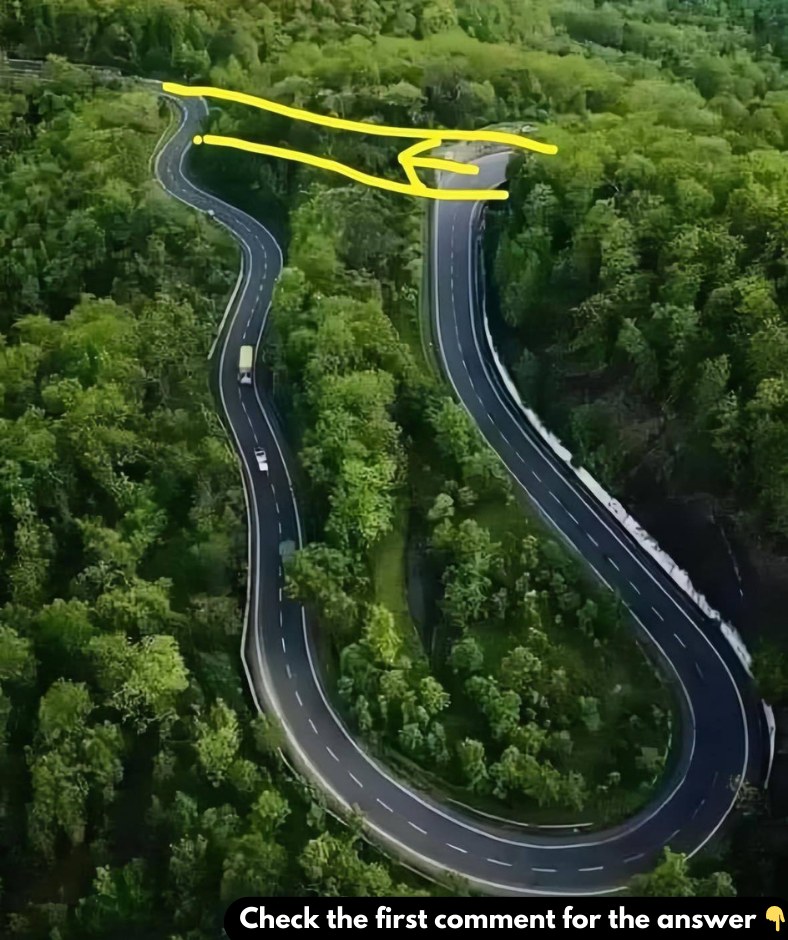While straight roads may seem like the most efficient way to get from point A to point B, they pose significant dangers that are often overlooked. Curved roads, however, provide hidden safety benefits that could make your next drive safer.
Why Straight Roads Can Be More Dangerous Than You Think
Fatigue and Loss of Focus on Long Straight Roads
Have you ever felt your mind wander on a long, straight road? It’s not uncommon. When driving on a flat, straight stretch for extended periods, drivers often become complacent. Without the need for much active input, their attention drifts, leading to fatigue and sometimes even drowsiness. This loss of focus can significantly increase the risk of accidents.

Curves Stimulate Driver Engagement
Why Winding Roads Keep You Alert
Curved roads, on the other hand, are designed to keep drivers engaged. The constant need to adjust steering, monitor speed, and stay aware of the changing path ahead prevents drivers from zoning out. When faced with curves, your mind stays sharper, and you’re far more likely to stay attentive to the road conditions. It’s a simple principle—curves create mental stimulation that helps reduce the risk of accidents caused by inattention.
The Science Behind Curved Road Design
Curve Radius and Centrifugal Force: What Engineers Consider
Curved roads aren’t designed at random. Engineers carefully calculate the curve radius to ensure that drivers can navigate turns safely. These calculations take into account factors like vehicle speed and centrifugal force, which acts on the vehicle as it rounds a curve. When the curve is optimized, it allows drivers to take turns smoothly without losing control, even at higher speeds. This balance creates a safer driving experience overall.
Why Steep, Straight Roads Are Riskier
Loss of Control on Steep Inclines
While flat, straight roads can be risky, steep straight roads are even more dangerous. The problem with steep descents is that they increase the likelihood of losing control, particularly for heavily loaded vehicles like trucks. Even cars can struggle to maintain stability when descending at high speeds on a straight incline.
Visibility Challenges
In addition to the control issues, visibility is often compromised on steep roads. Drivers may struggle to see what lies ahead, making it difficult to anticipate sudden stops or obstacles. This lack of visibility can lead to devastating accidents, especially when combined with high speeds.
The Hidden Benefit of Winding Roads: Safety Through Time
The Time Trade-Off for Safety
You might be thinking, “But winding roads take longer!” And you’re right—curved roads may add a few extra minutes to your trip. However, that extra time is a small price to pay for improved safety. By keeping drivers engaged and alert, winding roads significantly reduce the likelihood of accidents caused by inattentiveness or fatigue.
How Curves Improve Visibility and Reaction Time
Increased Reaction Time on Curves
On a winding road, you’re constantly adjusting to what’s ahead, giving you more time to react to sudden changes or hazards. Curves naturally slow down your speed, which not only gives you more control but also improves your reaction time. This can be critical in preventing accidents in tricky driving conditions, such as rain or snow.
Curves and Inclines: Designing for Safe Driving
Gentle Inclines Are Safer Than Steep Slopes
While steep roads present significant challenges, gentle inclines are a different story. Gradual changes in elevation, often paired with curves, help drivers maintain control without the sudden acceleration that can occur on steeper roads. Engineers often design winding roads with gentle slopes to ensure vehicles remain stable and drivers stay focused.
How Centrifugal Force Keeps You on the Road
The Role of Physics in Curve Design
When navigating a curve, centrifugal force pushes your vehicle outward. To counteract this, road engineers design curves to accommodate these forces, ensuring that drivers can maintain control without skidding off the road. By carefully balancing the curve’s radius and the vehicle’s speed, these roads are made both safe and intuitive for drivers.
Driving Through Curves: A Skill That Keeps You Safe
The Importance of Adapting to Curved Roads
Curved roads not only keep you safer—they also make you a better driver. Navigating curves requires more active engagement with your vehicle. You must adjust your speed, steering, and awareness, all of which help you stay sharp behind the wheel. This heightened focus reduces the risk of accidents and improves your overall driving skill.
The Psychological Benefits of Driving Curved Roads
How Curved Roads Reduce Stress
Interestingly, driving on winding roads can also reduce driving-related stress. The active engagement required by curves helps you stay present, which can prevent the kind of mental fatigue that often comes from monotonous, straight highways. The result is a more dynamic and enjoyable driving experience that’s not only safer but more refreshing.
Why Curved Roads Are a Safer Choice
While straight roads may seem efficient, they often increase the risk of accidents due to driver fatigue and loss of focus. Curved roads, with their carefully designed radii and inclines, keep drivers engaged, enhance reaction times, and offer better control. The additional time spent on winding roads is a small price to pay for the significant safety benefits they provide.
When you consider the science of road design, it becomes clear that curved roads are not just safer—they are essential for keeping drivers alert, engaged, and in control. So next time you find yourself winding through a curve, remember that those twists and turns are working in your favor.





